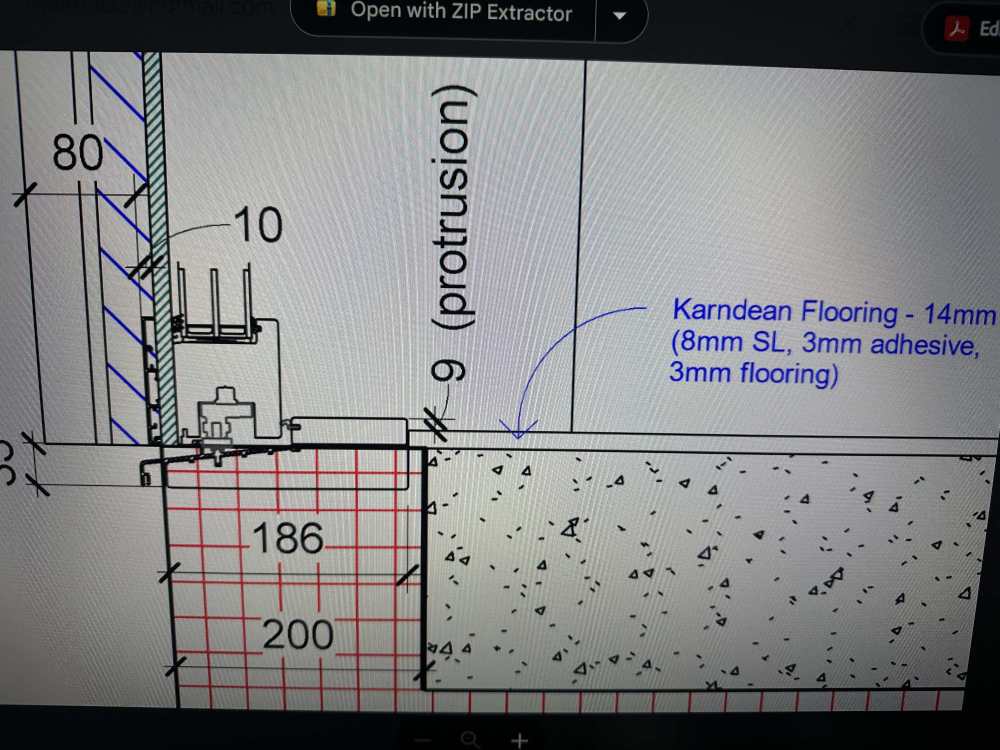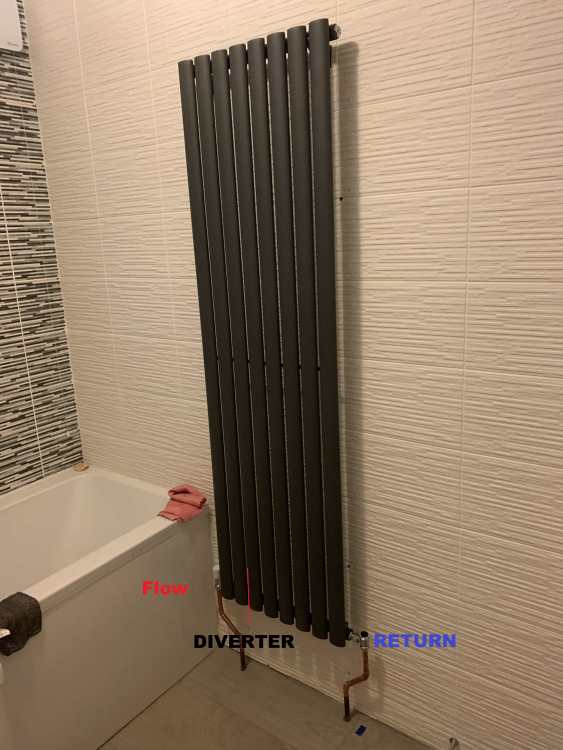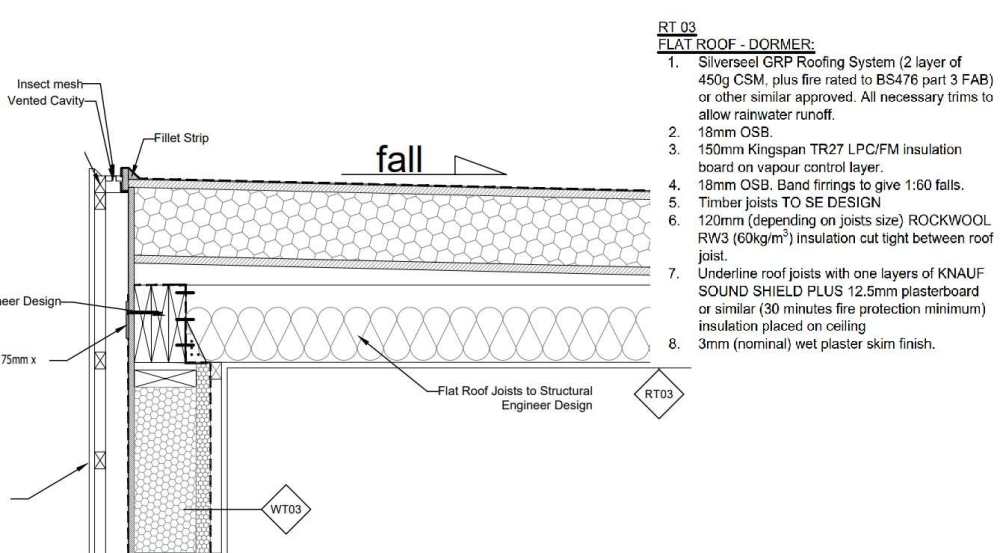All Activity
- Past hour
-
One of these? https://coolenergyshop.com/products/cool-energy-reverso-towel-rail-water-fan-coil-ce-bt400?srsltid=AfmBOooq7706CGmIshZFQdCuvbdMxRj_pSnjyrd_Yw3GQiz-wMRnHEQj
-

Copper vs aluminum clouts for slate roof?
JohnMo replied to ruggers's topic in Roofing, Tiling & Slating
Think the thicker ones, roof installer did everything including nail supply. -

Fabric and ventilation heat loss calculator
JohnMo replied to Jeremy Harris's topic in Heat Insulation
1, 3, multi storey building you state the ground floor area. 2. Unfortunately ASHP don't make this easy for anyone and none use the same reference scale. So you to dig about and find technical data books, which in general will give a range of valves for low, middle, nominal, and max output, for various flow and outside temp. 4, if you have downstairs heating only it needs to provide all the heat output for all floors. So by way of example, 200m house with 100m2 on each level. Total heat energy required required is 10W/m2, if supplied over two floors of heating. To compensate for one floor providing the heat, you need to output 20W/M2. But total heat load remains fixed by heat loss, you have how its delivered.- 187 replies
-
- heat loss
- ventilation
-
(and 4 more)
Tagged with:
- Today
-
Copper vs aluminum clouts for slate roof?
ruggers replied to ruggers's topic in Roofing, Tiling & Slating
No one could get me a price until the new year. Did you use 2.65 or 3.35mm? Cheapest i can get is £89 per 5kg of 2.65mm, which is a lot cheaper than online. Amazon is £82 but not sure what they'll be like. -
Fabric and ventilation heat loss calculator
Great_scot_selfbuild replied to Jeremy Harris's topic in Heat Insulation
@JohnMo I've just been revisiting my earlier posts on this thread. I'm so pleased I wasn't rushed into making a poor decision earlier and have revisited this after going through some detail about our UFH design - I'm re-visiting this thread because none (literally none) of the UFH suppliers asked for any details about heat loss in working out their proposed design, and I realise better now exactly why I need to start from a solid foundation of properly understanding our heat loss, the resultant ASHP and then looking for the right emitter sizing/specification. I've now re-read this thread and although I'm close, I'm not entirely there in understanding the modulation (your earlier reply was really helpful in prompting me to pause and start to question this more, but alas I am being slow and could do with it spelling out, if you or someone else is willing to?). I've so little confidence in what I've been provided by the companies (the slightest question to them ends up with them going very silent and figuratively 'pointing' at the results that their over-simplified tool has output; they just want the sale and to move on). So, having read and re-read this thread (not just my questions), I'm of the view that our insulation will be good enough that the down-time required to heat the Domestic Hot Water Tank (looking to get a 250L / 300L one), doesn't really require us to size-up the ASHP noticeably (@jack's earlier reply about the ASHP heating the DHW for a few hours in a day could be almost imperceptible - I think this could apply to our build). I'm currently looking to improve the quality of the floor insulation, and so have re-run the heat loss calculator sheet (2 screenshots - close-up in the text and the whole version is attached). Summary questions: 1. Going over this calculator, I've just realised that I need to confirm an entry - the internal floor area I have input is for both floors, rather than just the ground floor - should this not actually be just the ground floor? as the intermediate floor won't contribute to heat loss as it is within the warm envelope? (I had populated it as the 'default' approach when asked for house size as being the area of all floors). 2. @JohnMo (or others), would you mind explaining ASHP modulation and what I should be looking for in the spec sheets of a heat pump, and how does this translate to what suppliers/manufacturers state as being a '6kw ASHP' (is this in the middle of the modulation range, or the peak performance of the HP? 3. Should the Heat Loss calculator value for 'Floor Area' be just the ground floor, or combined floor areas? (if just the ground floor, the summary table comes out as follows): 4. We plan to only install UFH (wet) downstairs, with upstairs having electric mats in the bathrooms. All the UFH suppliers have stated that we won't achieve BR spec with UFH downstairs only and we'll need at least some emitters in the bedrooms. I'm inclined to prefer the option of specifying some limited electric UFH mats in the bedrooms which could be simply left turned off, but provide a backup in case we've miscalculated and find that the rooms do need some extra heat (I'd really rather get the calculations right though, with this group's help if possible?). I know some of you will have encountered something like this - what are your views? If challenged by building control, how do I rebuff their request for us to demonstrate compliance (as suggested by the UFH suppliers)? This post has become much(!) longer than I set out to write. Thanks for getting to the end and I hope some of you are able to comment / advise. Great Scot! Selfbuild- 187 replies
-
- heat loss
- ventilation
-
(and 4 more)
Tagged with:
- Yesterday
-
Great. And what about sourcing the sand to be suitable and all the same? That's a huge advantage having been there and done that. Were you instructed on accurate mixing? What else did you learn about tricks of the trade?
-
Hmm that's interesting - Thank you A double version of what I currently have 1600 x 472 has an claimed output of 1579 w I could easily increase the height to 1800 x 472 and that has a claimed output of 1750 w It seems neither will get me to target (closer but no cigar as they say)
-
I didn't know whether the detailed drawings from the manufacturer would suffice. Eg, Velfac provide the below, so I suspect Norrsken do to? https://products-commercial.velfac.co.uk/products/18760/18789/19843/
-
I think I need to get on and get details finalised, but I didn't want to get too specific now regarding floor finishes. I've decided to cancel the idea of a power floated floor. Nice idea, but just too much chance of it looking xxxx or going badly wrong.
-
With a flow return 35/30 something like DT50 output of 1985. Have a look and play with the attached spreadsheet. What I've generally found with radiators is that as soon as you get into the 35 and below flow temp and DT5 the sizes start to get quite ridiculous, especially with warmer rooms - e.g. with this one the conversion factor is 0.115 bathroom rad size estimate.ods
-
At the topof the wall i presume you mran?
- 4 replies
-
- flat roof
- condensation
-
(and 2 more)
Tagged with:
-
Give it to the architect if you want to burn money, or get it near as damn it before doing so and reduce the pain.
-
Welcome. +1 What’s the rationale for having a 2 bed when you have the footprint for 3? Do you have loads of clothes? To future proof could you move the en-suite next to the bedroom and dressing room to where the en-suite is? Then you could have a door to the corridor that’s locked until it might be needed. Appreciate pipes/drainage will shift but it would give more flex later. Also imho en-suites are better if they are close if you need to get up in the night. It’s quite a walk as laid out. Could be an easy change - i think you can shift internal layout without reverting back to planning but might need amendments if you change externals/window positions. Someone please correct if that’s not the case.
-
I'm debating upgrading the two bathroom rads They are verticals - I purchased them in 2023 when I was still using the previous glow worm boiler that couldn't cope with a flow temp below 45 and I had to fit aftermarket diverters to make them work properly (picture below was from a thread on rubbish quality rads) Last winter I was transitioning from scheduled heating at higher temps to 24/7 with weather compensation so the bathroom temps were a lot warmer Now I've been running flow temps in the winter of low to mid 30's the bathrooms only reach 21 deg C - personally I find that OK but Mrs Alien feels that they need to be warmer (she does however like a long bath. They are rated at 0.89 kW at T50 - heat loss of the bathrooms is pretty much identical at 220 w What I'm trying to get my head round is how much larger a rad I need to get to a target of 23 Deg C with my current flow temps (I know I can get a double version of the on I have and Mrs Alien is happy with the asthetics.............. The current rads wouldn't go to waste as one could replace a towel rail rad in downstairs toilet and another in the utility room (both the towel rails used to be in the bathrooms but couldn't get the rooms to temp at 45 deg flow temps so were relocated to replace 1980's single panel single convectors rads rather than wasted) The utility room in particular has additional heat sources, tumble drier, Freezer, Fridge and washing machine so needs very little additional heat I might ask ChatGPT to see if it can work out what wattage I need to hit 23 seeing as that's the current trend for everything PS No the rooms wouldn't be continually heated to 23 - I'd manage the rooms temps with a setback when not bathing!!!
-
Welcome! Overall looks like a nice plan. I am curious what's driving decision to dedicate so much of the space to the master dressing room? I would have thought a smaller dresser and a 3rd bed/office would be a better use of space (and more saleable if circumstances change). Alternatively, a layout that allowed some of the dresser to be made into that extra room without significant rework. I assume you wouldn't have got this far into the design without serious thought into this so really curious to hear your thought process.
-
Rear extension with existing small protrusion
NoPaddle replied to NoPaddle's topic in Planning Permission
Full planning it is. Prepare yourselves for more questions. 🤠 -
When we had our technical drawings done for building regulations submission, we hadn't finalised the sliding patio doors and windows, but we knew the sizes. So now, we are thinking about getting started, I've now got loads of questions. 1) Footing details (already discussed this on BH) 2) Level threshold detail, but the build up detail is dependent on the door frame manufacturer Do most people give their tech architect all this information upfront, to enable the associated junction details to be created?
-
Looks great. Really simple plan and elevations.
-
If you're lucky, one of the mods will do it for you. This looks really nice & I look forward to hearing more as the work progresses. I'd cut back on some of that glass. I'm guessing you have lovely views to the south, so all those windows will stay, but I'd say you should consider deleting some of the windows down the long sides & making some of the windows that are retained smaller. It will make your house cheaper to build & cheaper to heat/cool. I'm envious of your integral garage.
-
Big cold bridge.
- 4 replies
-
- flat roof
- condensation
-
(and 2 more)
Tagged with:
-
Thanks - this is what I was missing! (Because I can’t use loopCAD I wasn’t aware of the inputs it required, and they never asked for any thermal performance inputs, so god knows what they’ve based their LoopCAD design on. How on earth is any customer meant to navigate this industry with such levels of poor customer service and engagement (I’m sure the very expensive consultancies make their money on the basis of this ‘quality’ elsewhere in the market.
-
I don’t like this because: 1) There’s a big wedge of cold, damp air in the middle 2) Even if we fix 1) above, I’m concerned the 120mm Rockwool above the ceiling may insulate well enough to make the OSB supporting the PIR cold enough for condensation to form (& the VCL is above this OSB, so it will have a significant supply of moisture to it). 3) It’s a bathroom – even if we swap out the KNAUF Soundshield plasterboard for a water resistant plaster board, we may still need something else to stop moisture rising into the structure . Would we? I don’t know – I’m a novice. The same roof make up is specified over the bedrooms too. I need to ensure these rooms will be quiet. I’d be happy to hear the rain as I drift off to sleep, but rest of the household demands absolute silence. I’m thinking I should change the design so we have, from top down: 1. roof covering – which may or may not be not be GRP (let’s not get into that now) 2. 18mm OSB (can I get away with 11mm to save £330 over approx. 55m2)? 3. 200mm PIR with top layer Kingspan TR47, which has built in falls, meaning firings will not be required lower down (I haven’t priced TR47 yet). Taped at joins & in two layers with offset joins . 3b & is it worth the expense of Gapotape (or perhaps cheaper alternative) all around the perimeter, which will mostly be OBB3? 4. VCL – If somebody could tell me which one to go for or what the spec ‘should be (in terms of SD value? – I don’t know) that would be helpful. 5. 18mm OSB 6. 170mm C24 joists, or perhaps fatter 150mm joists, if SE allows 7. unvented air between the joists 7b. For outside walls, do I stuff 100mm (or more) rockwool against the sides, (along the joists on the long side & between the joists on the cheeks), so the roof insulation is “tucked in”? 8. 100mm Rockwool fitting tight between the rafters – this is for sound insulation, really, but it’s making the void cold. This sits directly on top of 9) 9. 12.5mm plaster board (water resistant type if it’s a bathroom) 10. resilient bars 11. another 12.5mm plaster board (water resistant type if it’s a bathroom) Once I’ve settled on a make-up, I can start worrying about the edges/interfaces.
- 4 replies
-
- flat roof
- condensation
-
(and 2 more)
Tagged with:
-
- 4 replies
-
- flat roof
- condensation
-
(and 2 more)
Tagged with:












